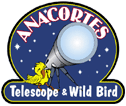stupid question warning!
I just finished my first dob, and I know i should know this. think i did at one time but...took it for granted until I had a pop quiz today: a friend of mine asked me over a beer how my scope works. I drew the usual newt diagram showing incoming light, the primary parabola and the focussing property of that,, the reflection and the 45° secondary. then he asked the confounding question. Why doesn't the secondary block out the center of your view? I struggled to convince him that it doesn't, and ultimately couldn't prove it, or draw it out, but just left him with "trust me, it's not visible. it does impede contrast, but it's not a hole in the middle of your view. but i'll have to get back to you as to why exactly though."
so how do you explain this and/or is there a site you can point me to that explains this?
darn those "simple" questions!
Tom.
I just finished my first dob, and I know i should know this. think i did at one time but...took it for granted until I had a pop quiz today: a friend of mine asked me over a beer how my scope works. I drew the usual newt diagram showing incoming light, the primary parabola and the focussing property of that,, the reflection and the 45° secondary. then he asked the confounding question. Why doesn't the secondary block out the center of your view? I struggled to convince him that it doesn't, and ultimately couldn't prove it, or draw it out, but just left him with "trust me, it's not visible. it does impede contrast, but it's not a hole in the middle of your view. but i'll have to get back to you as to why exactly though."
so how do you explain this and/or is there a site you can point me to that explains this?
darn those "simple" questions!
Tom.


